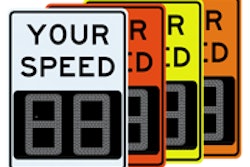Recent public attention to distracted driving will likely spur additional legislative activity as states convene their 2012 sessions, according to AAA. Laws that ban texting while driving and that improve teen driver safety again top AAA’s nationwide legislative agenda to improve highway safety.
“Last month’s NTSB recommendation will lead state legislatures to consider a range of bills to address distracted driving during 2012,” said AAA Vice President of Public Affairs Kathleen Marvaso in a press release. “Few states have given serious legislative consideration to full cell phone bans, but AAA expects continued progress in our campaign to pass laws banning texting while driving in all 50 states, as well as enacting full wireless bans for new teen drivers and laws that increase penalties for drivers who crash or commit violations while driving distracted.
“AAA will also continue to work with legislators and other safety advocates in statehouses across the country to pass lifesaving laws that improve teen driver licensing and increase seat belt and child safety seat requirements.”
AAA’s top traffic safety priorities in the states include the following:
Texting while driving bans: AAA in 2009 launched a national campaign to pass laws banning text messaging while driving in all 50 states. Five states enacted these laws in 2011, increasing the number of states to 35 with laws prohibiting all drivers from texting. AAA expects nearly every one of the 15 remaining states to consider this legislation in 2012.
Teen driver safety: The push for graduated driver licensing (GDL) for new teen drivers isn’t new, yet nearly every state still has opportunities to improve these laws that save lives and reduce crashes by easing teens into driving. While some advocates focused on Congressional legislation to incentivize states to improve GDL systems, AAA worked for significant improvements in North Dakota and Pennsylvania in 2011. This year presents opportunities for states to improve safety by increasing the age and requirements for getting a license, banning the use of wireless communications devices for novice drivers, and adding or improving limits on teen passengers and nighttime driving for newly licensed teens. Just six states (Delaware, Indiana, Michigan, New York, Oklahoma, and West Virginia) have GDL systems that meet AAA’s guidelines for nighttime limits, passenger limits, and practice requirements.
Booster seat laws: Despite their proven ability to reduce injuries and deaths for child passengers, three states (Arizona, Florida and South Dakota) continue without booster seat requirements. Georgia and California increased their booster seat ages in 2011, leaving 19 states with booster seat laws that fall short of meeting safety experts’ guidelines, which include all children under age 8.
Primary seat belt laws: AAA and other safety advocates will continue to work to improve laws in the remaining 18 states without a primary belt law, as well as attempt to increase fines in some states with weak penalties and expand seat belt requirements to include back seat passengers in remaining states. Primary seat belt laws have repeatedly been shown as a low cost way for states to quickly increase belt use, reduce traffic deaths, and lower the cost of crashes.
Move over laws: Every state except Hawaii and the District of Columbia requires drivers to slow down and, if safe, “move over” when passing an emergency vehicle that is actively working on a roadway. Additionally, 45 states, including Arizona, New York and Texas, which improved their laws in 2011, also require drivers to move over for tow trucks. AAA will continue to promote these laws in the remaining states













